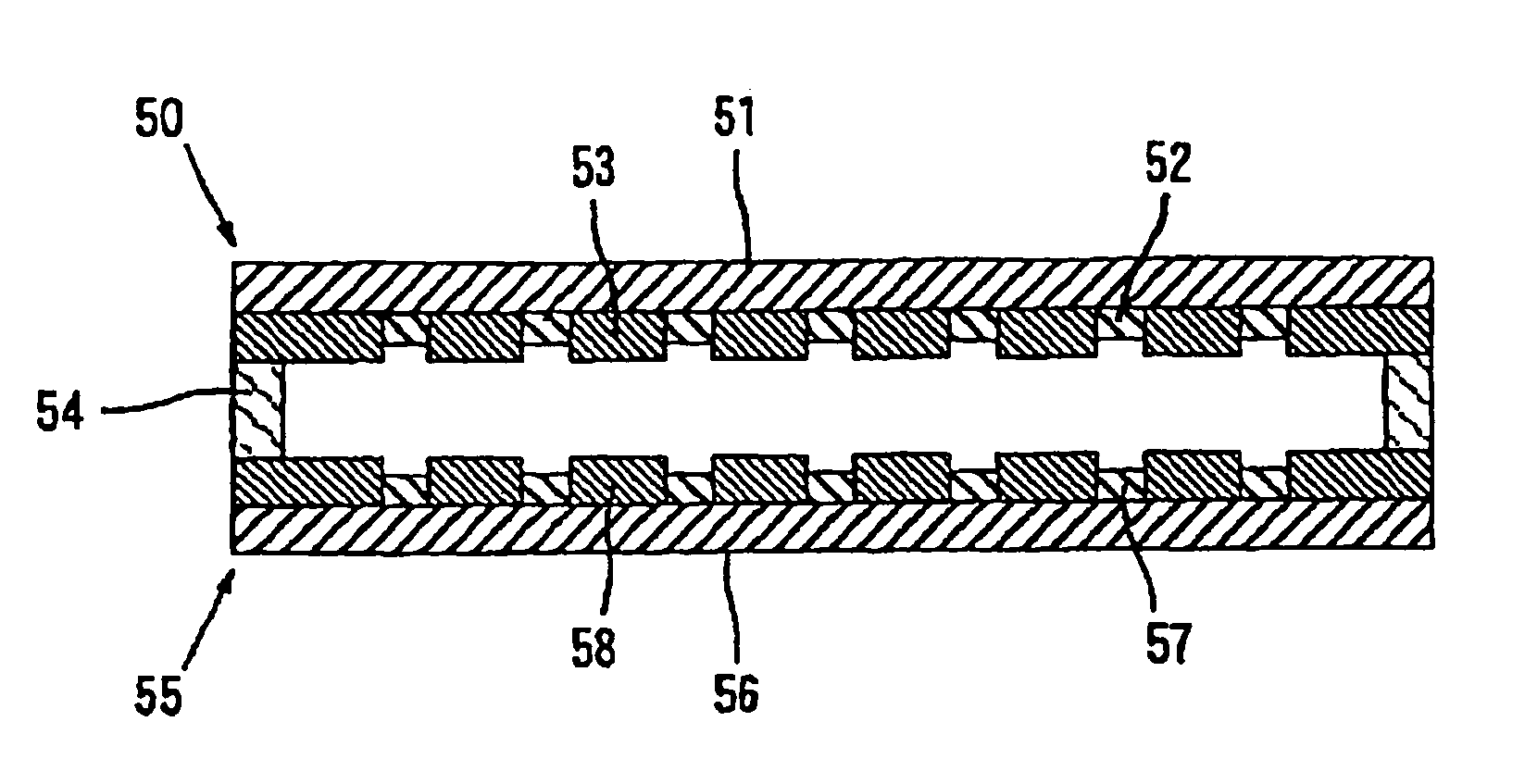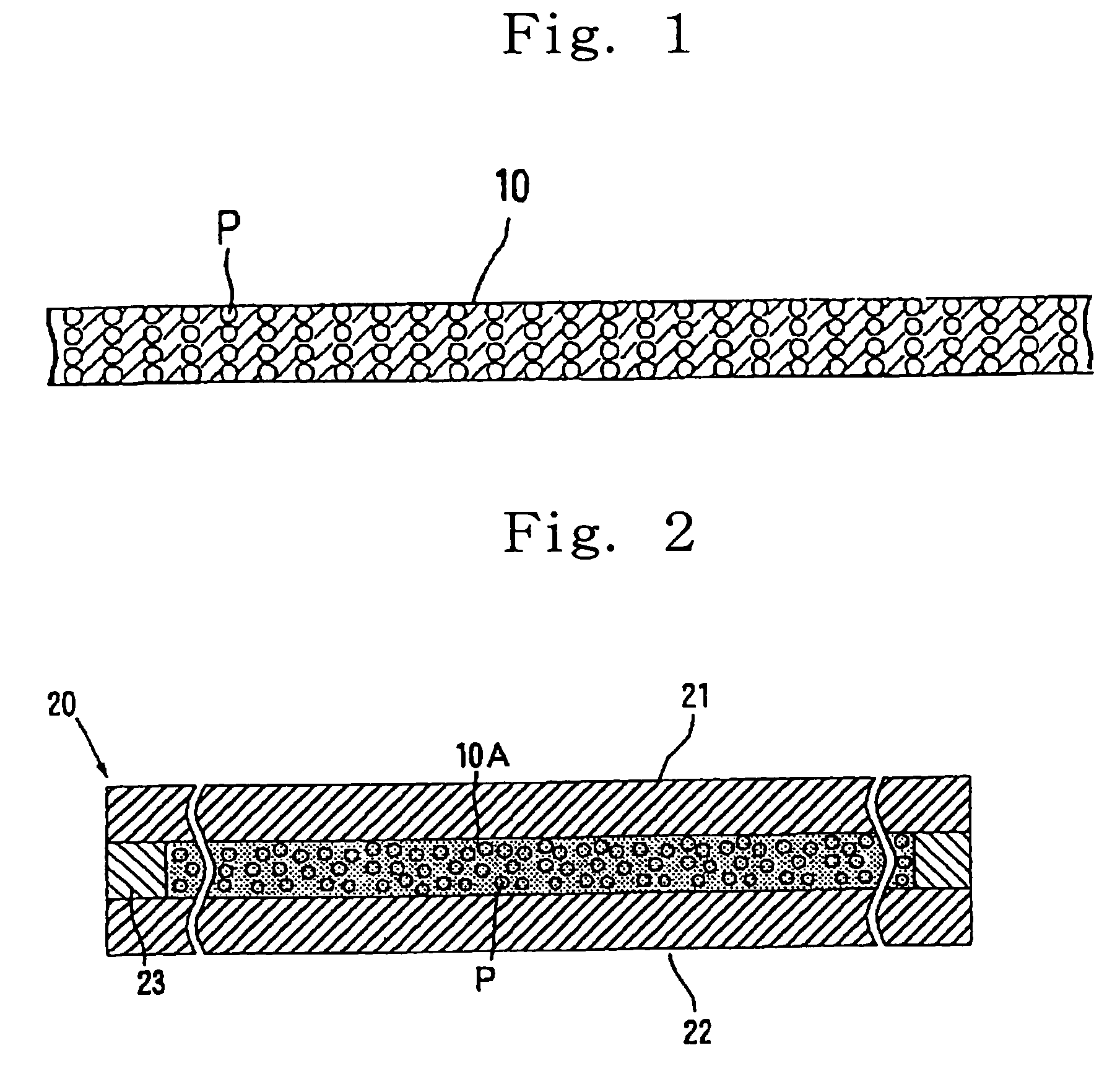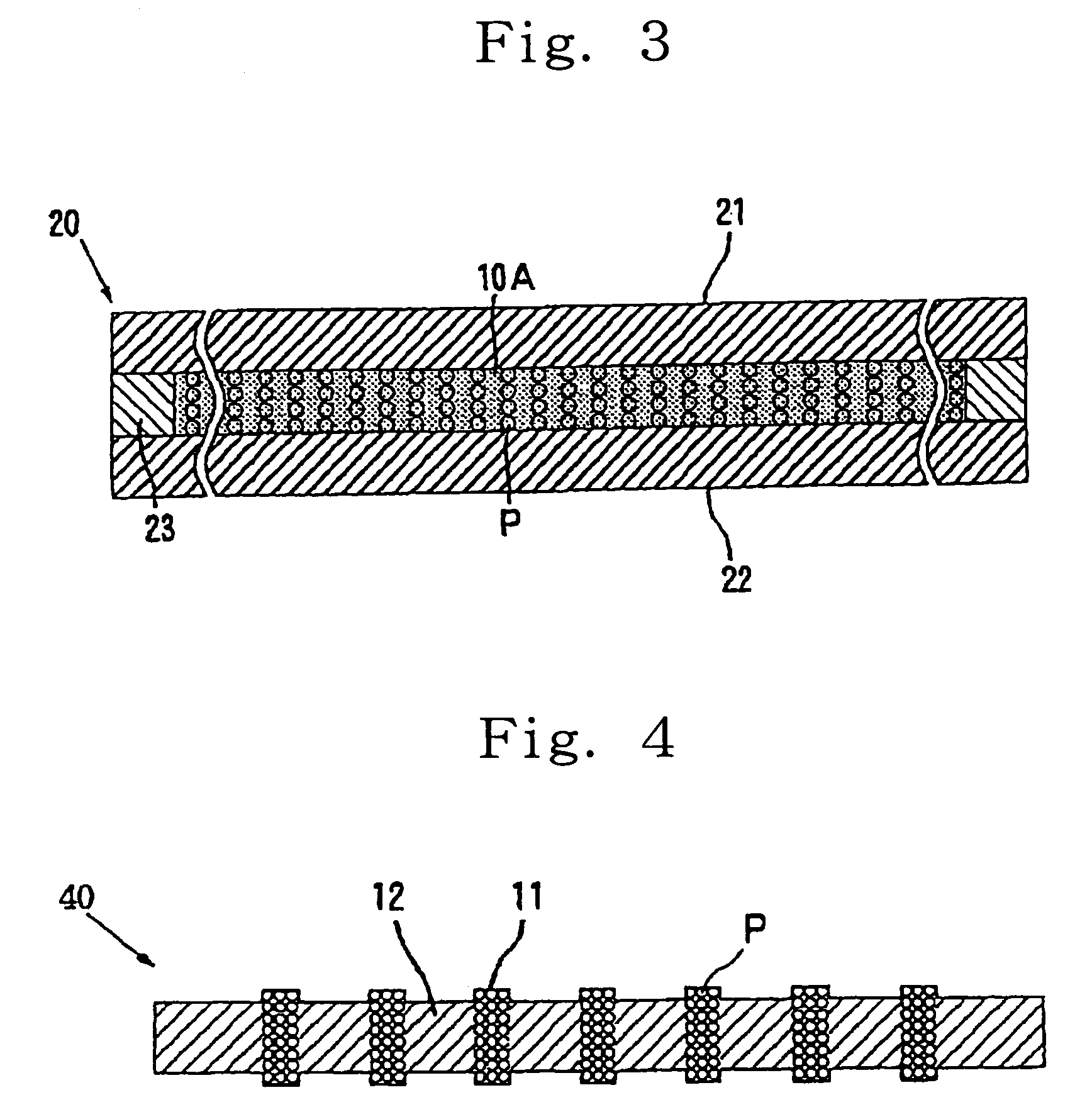Anisotropic, conductive sheet and impedance measuring probe
a technology of conductive sheets and impedance measuring probes, applied in the direction of connection contact materials, coupling device connections, instruments, etc., can solve the problems of increasing the unnegligible level, the transmission of desired data signals may not become infeasible, and the performance requirements of printed wiring boards for transmitting data signals between cpu and external apparatus
- Summary
- Abstract
- Description
- Claims
- Application Information
AI Technical Summary
Benefits of technology
Problems solved by technology
Method used
Image
Examples
example 1
[0184]To 100 parts by mass of addition type liquid silicone rubber, “KE2000-60” (product of Shin-Etsu Chemical Co., Ltd.), were added 22.5 parts by mass of magnetic conductive particles having an number average particle diameter of 8 μm and 2.5 parts by mass of sodium alkylsulfonate (CnH2n+1SO3Na (n=12 to 20)) to mix them, thereby preparing a sheet-molding material.
[0185]In the above-described process, composite particles (average amount coated: 7% by weight of the weight of core particles) obtained by plating core particles formed of nickel with gold were used as the magnetic conductive particles.
[0186]The sheet-molding material thus prepared was filled into a mold having the construction illustrated in FIG. 2 and equipped with a spacer having a thickness of 30 nm, thereby forming a sheet-molding material layer.
[0187]The sheet-molding material layer formed between a top force and a bottom force, which were each made of a ferromagnetic substance plate, was then subjected to a curing...
PUM
| Property | Measurement | Unit |
|---|---|---|
| thickness W1 | aaaaa | aaaaa |
| thickness W1 | aaaaa | aaaaa |
| thickness W2 | aaaaa | aaaaa |
Abstract
Description
Claims
Application Information
 Login to View More
Login to View More - R&D
- Intellectual Property
- Life Sciences
- Materials
- Tech Scout
- Unparalleled Data Quality
- Higher Quality Content
- 60% Fewer Hallucinations
Browse by: Latest US Patents, China's latest patents, Technical Efficacy Thesaurus, Application Domain, Technology Topic, Popular Technical Reports.
© 2025 PatSnap. All rights reserved.Legal|Privacy policy|Modern Slavery Act Transparency Statement|Sitemap|About US| Contact US: help@patsnap.com



